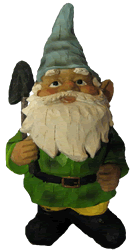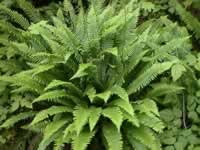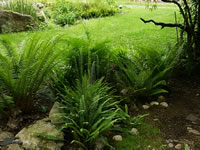How to Grow and Care for Deer Ferns in Your Garden
Blechnum spicant
     
 
|
The Deer Fern is a common forest fern that belongs somewhere in your garden!
Deer Ferns resemble miniature Sword Ferns but they are smaller and have slightly rounded fronds.
Deer ferns are native to Europe, Northeast Asia and Western North America.
Unfortunately, these beautiful plants are now considered threatened in many parts of Europe.
Deer ferns are a perfect addition to any average garden.
They are a very durable and low maintainance plant which will eventually spread out to create a three foot clump.

|
Growing Requirements for Deer Ferns
Blechnum spicant are hardy in USDA hardiness zones 5-8
Deer Ferns can be grown in difficult situations such as under evergreen trees or in deep shade. They are fairly drought tolerate plants but will grow best if the soil is kept moderately moist.
Deer Ferns should be planted in a compost rich, acidic soil with a pH of 5.0-6.5.
They thrive in partial to full shade but can be grown in almost any light conditions, except full sun in a hot climate.
The Unique Fronds of the Deer Fern
Deer ferns are distinctive and unique because they have two different types of fronds.
The fertile fronds are the taller of the two (up to 36"), and grow out of the center of each clump.
These fertile fronds dry out and wither away by autumn.
The sterile fronds are shorter (18") and thicker.
These sterile fronds are evergreen and will grow up to surround the fertile, center fronds
|
|
|
Growing Deer Ferns as House Plants
Deer ferns may also be grown potted house plant if provided with a cool environment.
In the home, they must be kept constantly and evenly moist.
Feed monthly except in the winter with an all purpose house plant food.
|
|
How to Propagate Deer Fern Plants
Deer Ferns are clump forming plants that are very easy to propagate by digging and dividing the roots in the fall, winter or early spring before the new fronds begin to emerge.
Ferns do not produce flowers, therefore they cannot produce seeds.
They reproduce with spores that form on the underside of the fronds.
Propagating ferns with spores is a fun and fairly easy method of growing new ferns,
but it can take 3-4 years to produce a mature plant.
Propagating Ferns with Spores
Using a Deer Fern to Survive in the Wilderness
|
Native Americans regarded the Deer Fern as a plant deserving much respect. This fern was often used for emergency food.
The children were told to look for it if they were lost, and eat the roots. The foliage can be eaten to prevent thirst.
The leaves of the Deer Fern can be boiled and the tea consumed as a general health aid and help with a variety of ailments.
Deer Ferns
Blechnum spicant
 |
 |
|
|
|
Search The Garden Helper:


